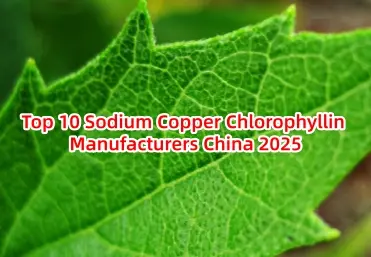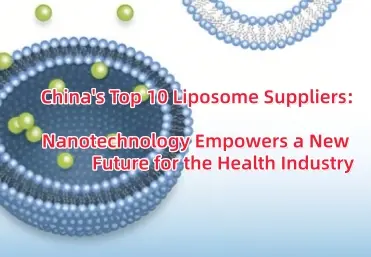What is Caffeic Acid?
Caffeic acid is an organic compound belonging to hydroxyl cassia bark acid, with two functional structures: phenolic hydroxyl and acrylic acid. Because caffeic acid is a key intermediate in lignin, one of the main components of biosynthetic plant biomass and its residues, it is widely found in various plant. It can be dissolved in hot water and ethanol, and slightly dissolved in cold water. Yellow-white crystals appear at room temperature.

Health Benefits of Caffeic Acid
Caffeic acid, is an organic acid, chemical formula C9H8O4, yellow crystalline powder, soluble in hot water, ethanol, slightly soluble in cold water, can be safely used in cosmetics, has a wide range of antibacterial and antiviral activities.
On October 27,2017, the World Health Organization's International Agency for Research on Cancer published a list of carcinogens for preliminary reference. Caffeic acid is in the list of class 2B carcinogens.
Can absorb ultraviolet light. Low concentration is to inhibit skin hair dye, which is conducive to enhance the strength of color.

Sources of Caffeic Acid
In nature, caffeic acid can be found in the bark of Eucalyptus blue, or in the freshwater for mulberry yellow mushrooms. Caffeic acid is very low in coffee, at only 0.03 mg / 100 ml. It is one of the main natural phenols contained in Moroccan nut oil, and a high content of caffeic acid in some herbs, especially thyme, sage and orchid (about 20mg / 100g). About 22mg / 100g in Ceylon cassia bark and star anise. Sunflower seeds have a high content of caffeic acid (8mg / 100g), a certain amount of caffeic acid (1.88mg / 100ml) in red wine, and caffeic acid (1mg / 100g) in applesce, apricots and plums. South America also contains fairly high levels of caffeic acid (150mg / 100g based on TLC density determination and HPLC). Are also present in the barley grains.
The synthesis of caffeic acid is produced from the hydroxylation of chlorogenic acid (side chain alcohol esterified). This hydroxylation process produces the caffeate of shikimic acid, which is converted into chlorogenic acid. It is a precursor of ferulic acid, cypress alcohol and myapol, which are important structural units forming lignin.
2.Caffeic Acid Supplements
Caffeic acid is prone to autooxidation. Glutathione and thiol compounds (such as cysteine, mercaptoacetic acid or lucelexol) or ascorbic acid inhibit the browning and disappearance of caffeic acid, which is caused by the oxidation of o-chol to o-diquinone. Chemical oxidation of caffeic acid with sodium periodate under acidic conditions produces dimers tetrahydrofuran 3,4-dicarboxylic acid. An oxidation system using horseradish peroxidase / hydrogen peroxide polymerizes caffeic acid. Caffeic acid is also used for matrix-assisted laser desorption / ionization mass spectrometry analysis of the protein-assisted matrix.

Research on Caffeic Acid
Sun Jinlin of The Third Hospital of Shandong Province explored the effect of caffeic acid on leukocyte and thrombocytopenia in lung cancer patients after radiotherapy. Methods: 68 lung cancer patients hospitalized in our hospital from July 2018 to November 2019 were selected. The patients were divided into two groups according to whether the patients received caffeic acid treatment, observation group and control group, with 34 patients in each group.
WBC and platelet levels before and 4 weeks after the observation and control groups. Results: There was a time effect on WBC and platelets in the observation group and the control group, and the levels of WBC and platelets increased in the observation group and the WBC and platelets in the observation group and the control group were higher at 1 week, 2 weeks and 4 weeks; the WBC and platelets in the observation group, and the level of WBC and platelets increased with time in the two groups, and the observation group was higher than that of the control group. Conclusion: Caffeic acid can improve the trend of WBC and platelet reduction after radiotherapy in lung cancer patients, and help to restore bone marrow suppression in patients.
Sun Xiaomeng, Cancer Hospital of Affiliated Hospital of Henan University of Science and Technology, discussed the effects of caffeic acid on the proliferation, migration, invasion of KYSE150 cells and subcutaneous tumor growth in nude mice. Methods: After KYSE150 cells were treated at 0,5,10,20, and 50 μmol/L of caffeic acid for 12,24,48,72, and 96 h, Cell proliferation capacity was measured by the CCK-8 kit; After KYSE150 cells were treated with 20 μmol/L caffeic acid for 96 h, Cell migration and invasion were measured by Transwell compartment; Luciferase-labeled KYSE150 cells were seeded subcutaneously in nude mice, It was randomly divided into control group, low concentration caffeic acid group and high concentration caffeic acid group, Of 5 mice in each group, Given 100 μL 3 g / L of sodium hydroxymethylcellulose, 50 or 100 mg / kg of caffeic acid intraperitoneally, 1 time / d, A total of 4 weeks. After 4 weeks, the growth of subcutaneous tumors was detected by small animal in vivo imaging, nude mice were killed by dececk, and subcutaneous tumors were dissected and weighed. Results: 5~50 μmol/L of caffeic acid can inhibit KYSE150 cell proliferation (P <0.05), and the greater the concentration of caffeic acid, the stronger the inhibition.20 μmol/L caffeic acid inhibited KYSE150 cell migration and invasion (P <0.05). The subcutaneous tumor volume and mass of low and high concentration rats decreased compared with the control group (P <0.05). Conclusion: Caffeic acid can inhibit KYSE150 cell proliferation, migration, invasion and tumor growth in nude mice.
Conclusion
Caffeic acid is widely distributed in a variety of traditional Chinese medicine plants such as wormwood, vegetable thistle and honeysuckle. It belongs to phenolic acid compounds, and has pharmacological effects such as cardiovascular protection, anti-mutagenic anti-cancer, antibacterial antiviral, anti-lipid and glucose, anti-leukemia, anti-immune regulation, gallbladder hemostasis and antioxidant. Caffeic acid can shrink increase solid microvessels, reduce permeability, improve coagulation can Chemicalbook and white blood cell platelet quantity, commonly used in clinical surgical and medical bleeding prevention and treatment, have significant curative effect of department of gynaecology bleeding disease, also used for tumor disease chemotherapy and radiotherapy and other causes of thrombocytopenia symptoms, the primary thrombocytopenia and barrier of leukocyte reduction and other diseases also have certain curative effect.
Caffeic acid is also a hemostatic agent, which has the effects of contracting and coagulation microvessels, improving the function of coagulation factors, and increasing white blood cells and platelets. It is suitable for preventing bleeding or hemostasis during surgical Chemicalbook surgery, as well as the hemostasis of hemorrhagic diseases such as internal medicine, obstetrics and gynecology. Also used for various causes caused by leukopenia, thrombocytopenia.
Website:site_e45e9567-9e32-465a-b8fd-e09f03f798c3
Mailbox:ericyang@xasost.com
WhatsApp:+86 13165723260

 Food Additives
Food Additives









